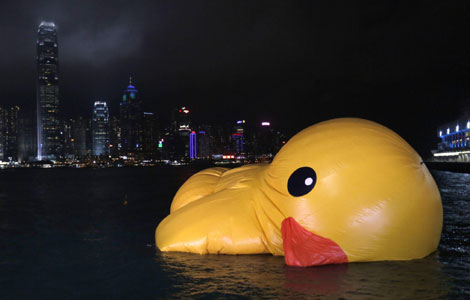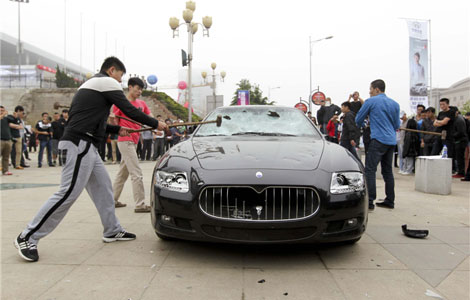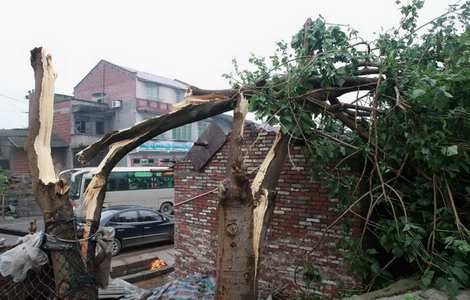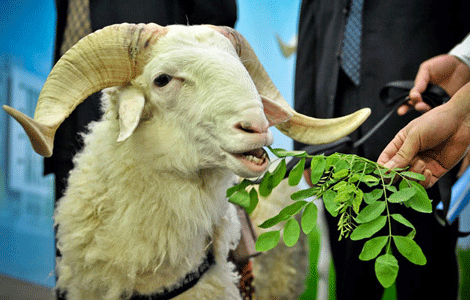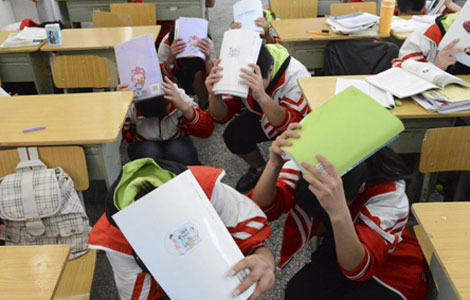
Manufacturing expansion in China slowed to below market expectation in January, dragged down by shrinking export orders, according to an official government index released on Friday.
But separately, an unofficial index for the sector, by a major international bank, hit a two-year high in January, suggesting domestic demand had strengthened.
The two indexes showed a 1.9-point difference in performance, which created some confusion in the market.
The Purchasing Managers' Index for the manufacturing industry, a gauge of nationwide manufacturing activity, retreated to 50.4 in January from 50.6 in December, lower than the market's expectation of around 51, the National Bureau of Statistics and the China Federation of Logistics and Purchasing jointly announced.
The official figures may encourage the government to further stimulate domestic demand for stabilizing the growth rebound since the last quarter of 2012, analysts said.
PMI had remained higher than 50 for four straight months, meaning steady expansion in the sector. A reading below 50 indicates contraction.
The government figures were released on the same day as those by HSBC Holdings Plc, which reported its own manufacturing PMI for last month, showing a sudden rise to 52.3 from 51.5 in December, a two-year high, said HSBC.
The UK's Financial Times suggested that the official PMI might be considered as reflective of State-owned companies, while the HSBC version was a better indication of private activity.
Sun Junwei, an economist in China with HSBC, said the sharp growth in its index was mainly due to the strengthening of domestic demand conditions, while external demand only showed tentative signs of stabilization.
Some experts suggested the marked difference in the two indexes could be linked to the official January PMI being the first time the statistics bureau had expanded its survey sample size to 3,000 enterprises across 31 industries, from the previous 820, across 21 sectors.
"This change of survey method may have obvious influence on the final reading. However, we believe the official PMI can better reflect the economic situation in China," said Liu Ligang, chief China economist with Australia and New Zealand Banking Group Ltd.
The sub-index of the official PMI that specifically indicates new orders rose to 51.6 from 51.2 in January, its highest since May 2012, which shows that market demand is continually rebounding, according to the statistics bureau.
However, new export orders contracted with their reading dropping to 48.5 last month, from 50 in December.
"It shows there is still uncertainty on outside demand," said Zhang Liqun, an analyst with the Development Research Center of the State Council.
Zhang added the sector's expansion remained modest partly because of seasonal factors, but also reflected that companies were reducing their output to avoid the serious problems created by over-production.
"China's economy is continuing its stable rebound since the last quarter of 2012, with more balanced demand and supply," he said.
"The economic development quality is improving."
Liu said the slightly weakened PMI suggests the economic recovery will continue to meet hurdles this year.
"But the country's urbanization process and the relatively high level of provincial investment may be able to support faster than 8 percent growth in the first quarter," Liu added.
Qu Hongbin, co-head of Asian Economic Research at HSBC, said: "We see increasing signals of a sustained growth recovery in the coming months: steady investment growth led by infrastructure projects; improving labor market conditions boosting consumer spending; and an ongoing re-stocking process, lifting production growth."
JPMorgan Chase & Co recently upgraded its 2013 GDP growth forecast for China to 8.2 percent from 8 percent.

